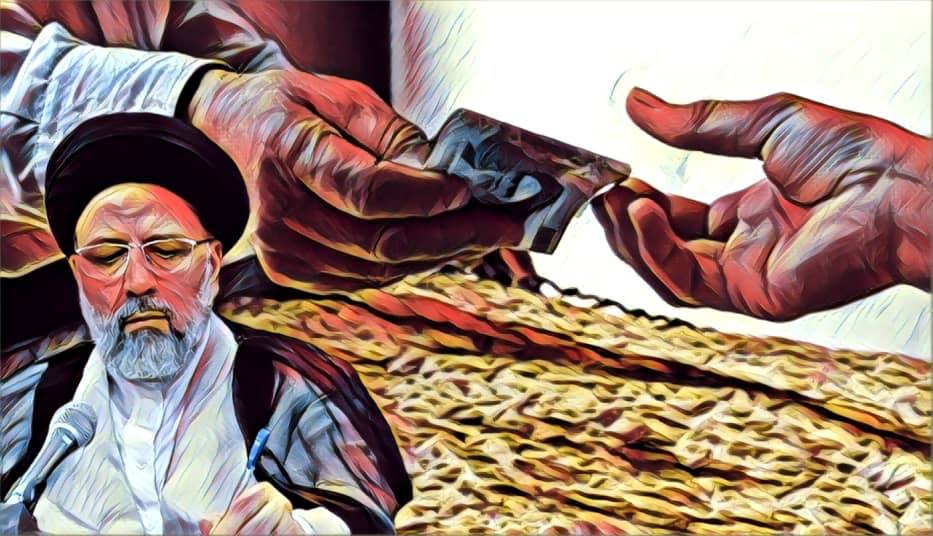Raisi quietly eliminated the bread subsidy
According to Iran Gate, calculations and observations show that Raisi’s government has quietly and behind the scenes completely eliminated the bread subsidy. In fact, Iranian citizens no longer have access to government-subsidized bread at a lower price than the market, and the price of bread is calculated as fully liberalized. In other words, Ebrahim Raisi’s government has made a new raid on people’s tables, leaving their pockets emptier than ever.
These days, Iranian citizens, in addition to the long lines at gas stations across the country, are witnessing the closure of most of the so-called government bakeries throughout the country. In cases where these bakeries are still baking bread, long lines can be seen in front of baking and distribution centers. However, whispers in economic circles and from experts suggest that Ebrahim Raisi’s government has eliminated the bread subsidy and significantly reduced the provision of government-priced flour to government bakeries.
How much is a kilo of bread
The new prices announced by the government for bread in 10 provinces indicate that each 600-gram loaf of Sangak bread is being sold for 9,000 tomans. This pricing, which will soon be implemented nationwide, has faced reactions from many experts. There have also been protests against the government’s performance in bread distribution in the mentioned provinces, which have received much media attention.
Considering this price and taking the government-priced Sangak as a benchmark, it can be said that each kilogram of Sangak bread in government bakeries will be offered at about 17,000 tomans. These prices have already been applied in provinces like Markazi, Yazd, Golestan, North and South Khorasan, and it is said that by the end of September 2023, the mentioned price will soon be applied in Tehran and all provinces of the country. However, if the new bread prices are applied nationwide as stated,
Half-hearted guaranteed wheat purchase
According to the head of the Iranian Wheat Farmers Union, after extensive disagreements with farmers, the government finally accepted to purchase wheat at 17,000 tomans. However, over time, it became clear that Ebrahim Raisi’s government not only broke its promise but also did not pay the guaranteed purchase cost of wheat to the farmers. According to the provided statistics, so far only about 48 percent, equivalent to 62 trillion tomans, of the required cost for the guaranteed purchase of wheat has been paid to producers by the government. Meanwhile, Raisi’s government owes about 70 trillion tomans to wheat farmers, and there is no news of this debt being paid.
Considering the inflation rate of over 45 percent, it should be noted that every day of delay in paying the government’s debt to the wheat farmers benefits Raisi’s cabinet and harms the farmers who sold their wheat at 17,000 tomans to the government. This means that although the government was forced to buy wheat at 17,000 tomans per kilo instead of 15,000 tomans, it acted in such a way, relying on the inflation lever, that not only did the farmers not gain much profit, but they also suffered significant losses.
How the bread subsidy was eliminated
Considering the previously mentioned prices, it can be inferred that the thirteenth government has effectively eliminated the bread subsidy, which no previous government had done, from the welfare basket of the people and the lower-income deciles. The government intends to offer each kilogram of bread at 17,000 tomans, similar to the 10 provinces currently facing the bread price adjustment plan.
On the other hand, it was said that the government purchased each kilogram of wheat at 17,000 tomans, and by relying on the inflation lever, the final cost of each kilogram of wheat for the government is approximately 14,000 tomans. This means that the new price of each kilogram of bread is 3,000 tomans more than the guaranteed purchase price of wheat.
This has never happened before, and governments used to set the bread price at least 40 percent less than the guaranteed purchase price of wheat. However, for the first time in Iran’s history in the past century, the price of bread has surpassed the guaranteed purchase price of wheat, effectively eliminating the bread subsidy.
This is while the government accepted the 17,000-toman wheat price with much reluctance. Meanwhile, Raisi repeatedly emphasized that bread is the most important item in the household basket and that the government had no intention of increasing bread prices in 2023. However, new prices have been implemented in more than 10 provinces, which, given the explanations provided, indicate the definite and complete removal of the bread subsidy.
The start of the smart bread subsidy plan from last night
English
View this article in English

